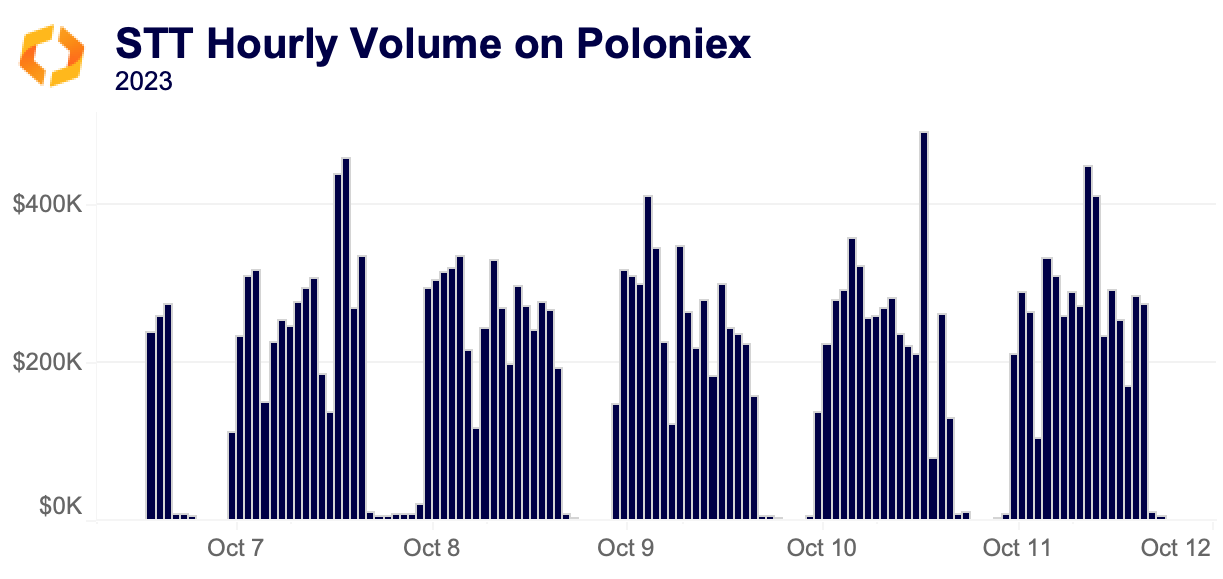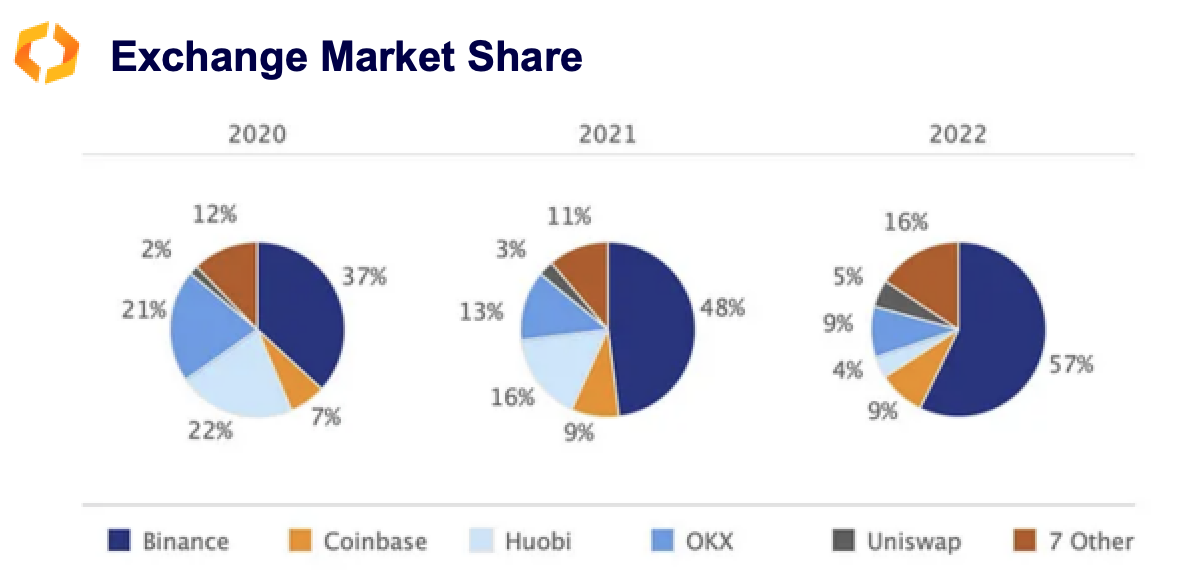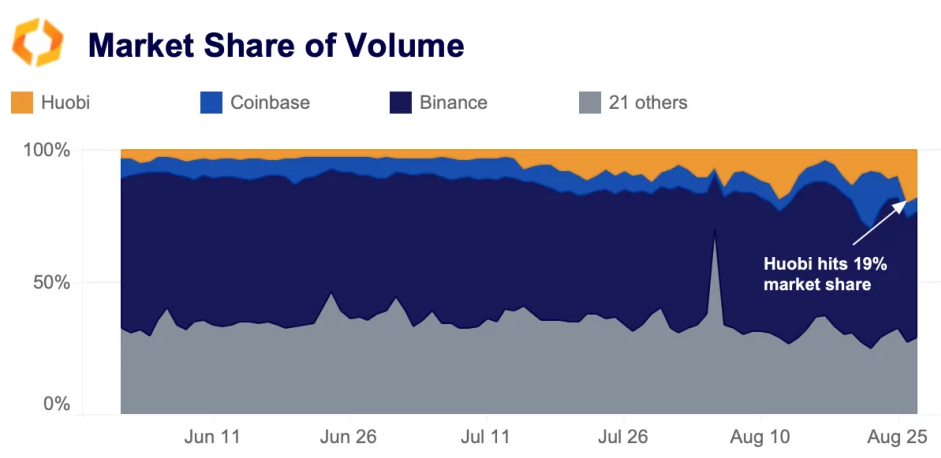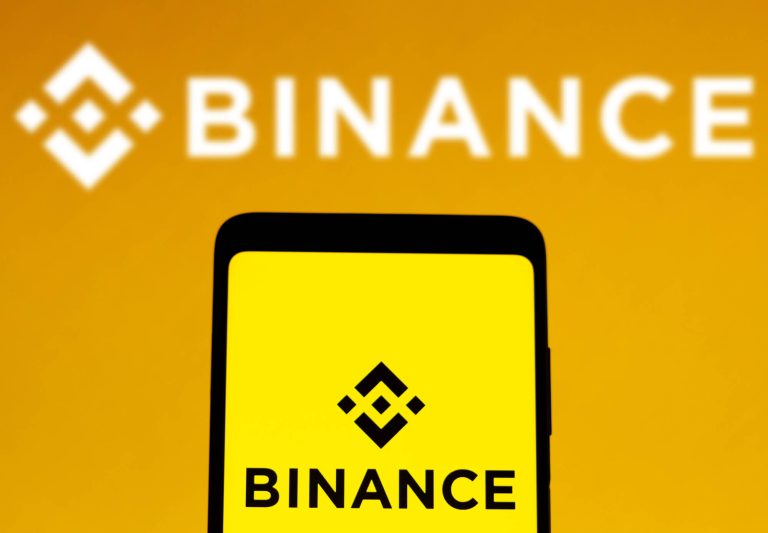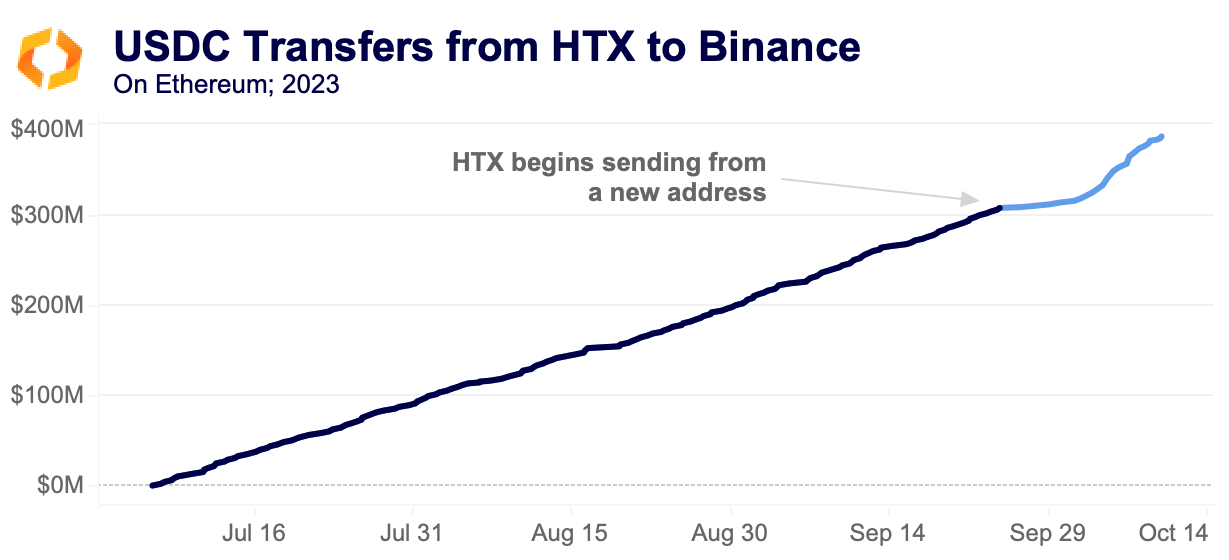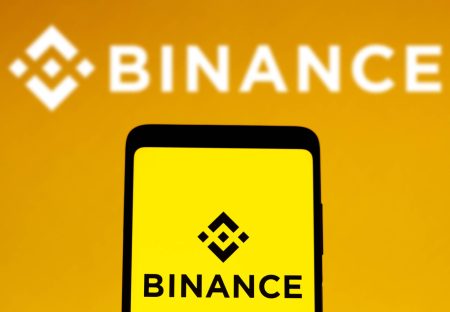Since the acquisition of crypto exchange Huobi (new HTX) by Tron founder Justin Sun, blockchain analysts sifted through some suspicious transactions. A background report in cooperation with market data provider Kaiko.
A month ago, Huobi made the curious decision to rename itself HTX, with the letters loosely standing for Huobi Tron Exchange. Of course, this name recalls the FTX exchange, which is back in the headlines with the start of the trial of Sam Bankman-Fried in New York. Detailed information on unusual activity on HTX, starting with an investigation into the relationship between the exchange and Poloniex, then on trading volumes, the USDT-USDC pair, and transactions with Binance.
- Poloniex and Houbi’s volumes have surged
- Huobi’s market share suffered after China’s regulatory change
- There has been significant selling of USDT for USDC on Huobi
- HTX has sent significant amounts of USDC to Binance
Poloniex records strong inorganic volume

Unlike other popular crypto exchanges, Poloniex never exceeded its highest monthly volume numbers reached during the 2017 frenzy, reaching a monthly volume of just over $10 billion in May 2022. This was until August 2023 - one of the lowest volume months since 2020 for most exchanges - when Poloniex recorded $20 billion in volume. This increase did not coincide with any major changes that could affect trading volumes to such an extent (e.g., the elimination of trading fees for major pairs like BTC-USDT).
In particular, earlier this year the SEC alleged that Justin Sun instructed employees to wash trade Tron's token TRX and BitTorrent's token BTT to increase interest in the projects. Below is an example of the unusual volume on Poloniex showing the token STT in recent days. Poloniex has no information about the token, which does not appear to be listed on any other central exchange.
Yet, in the past five days the token has registered nearly $25mn of volume on Poloniex. The massive surge in volume coupled with unusual volume patterns suggest artificial volumes on the exchange.
Unusual activities at HTX
HTX was founded in 2013 and spent its first years of existence establishing a strong foothold in China, becoming one of the country’s dominant exchanges. As China’s regulatory stance towards crypto soured, HTX expanded to other countries. Still, China’s crypto ban in 2021 dealt a severe blow to the exchange, with its market share dipping from 22% in 2020 to just 4% in 2022.
In October 2022, HTX was sold to an investment firm reportedly headed by Sun, who was appointed to the exchange’s Global Advisory Board. It was unclear what authority this position afforded. This was clarified in January 2023 when an HTX press release stated that, “Under the leadership of Justin Sun, it can be said that Huobi has embarked on the path to rebirth.”
The unusual activity on HTX was first identified in our Deep Dive on Worldcoin’s launch, which found clusters of matching buys and sells shortly after WLD was listed. It is unlikely that these patterns are organic volume.
The scale of the activity was revealed when we examined exchange market share, finding that HTX had exploded from just 4% of centralized exchange volume to nearly 20%. Similar to the surge in volume on Poloniex, which came at roughly the same time, there was no obvious change that could explain such a drastic shift, especially when volumes were at multi-year lows on all other exchanges.
Small altcoins (with less than $1bn of volume from March to October) were responsible for a significant portion of HTX’s volume surge, jumping from $1.4bn the week of July 16 to $3.4bn the following week. Larger altcoins went from $500mn weekly volume to $2.5bn just two weeks later. Meanwhile, BTC and ETH volume stayed roughly the same.
Systematic USDC sales
Furthermore, we noticed significant USDT bond losses in the HTX pair USDT-USDC. Upon closer inspection, it became clear that this was caused by strong net selling of USDT for USDC. Since the beginning of July, a net USDT 350 million was sold for USDC.
What’s most striking is how consistent this trend has been; there have only been a few short breaks in selling, each lasting less than 24 hours. Using Kaiko’s new wallet data, we’ve been able to find that two wallets linked to HTX have transferred nearly $400mn USDC to Binance since the start of July; the first wallet stopped transferring on September 24 and was quickly replaced by the second wallet.
So, in the past three months, a net of $350mn USDT has been systematically sold for USDC on HTX while nearly $400mn USDC has been transferred from HTX to Binance at a similar rate.
Conclusion
While not definitively linked, our data showing net $350mn USDT sold for USDC on HTX, alongside very similar USDC transfers to Binance, which also matches the amount of stUSDT held on HTX, is potentially concerning.
Even after regulatory crackdowns by jurisdictions all over the world, there are still broad swaths of the market that are loosely regulated. Whereas on-chain activity can be traced, centralized exchange activity remains something of a black box. Thus, it’s often necessary to combine many data types – in this case OHLCV, tick trade, and wallet data – to reveal a fuller picture of what’s happening on these exchanges.


